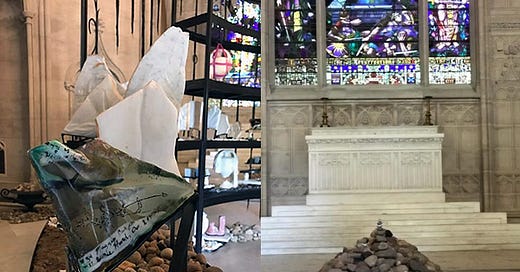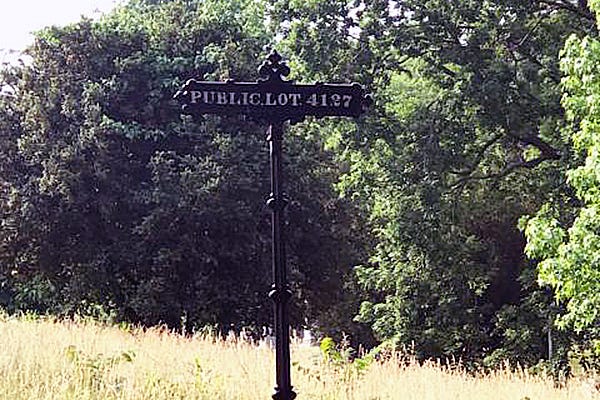In her wildly popular daily newsletter, "Letters from an American," historian Heather Cox Richardson offers readers like me a calm, broader perspective of the day's political events. On June 10th, she shared personal news that her book, Democracy Awakening: Notes on the State of America, was finally completed. She described how the process of writing it evolved and, with it, so did her perspective on the meaning of U.S. history. Her new understanding is now an explicitly democratic one, which has been kept alive primarily by marginalized Americans who have been at the forefront of bringing the principles of the Declaration of Independence to life.
Unlike her typical process of writing a book, her busy schedule required her to take a break before writing the second draft. In this extended pause, Cox Richardson had the curious impression that her chapters were interacting with each other while she ignored them. She felt that the manuscript was calling out to her, beckoning her to rewrite it in its entirety. She listened, and it evolved into a different thesis than she had set out to write two years earlier. “It was rather, as if,” she writes, "I had seen things more clearly out of the corner of my eye than if I had been looking directly at them."
I read her daily entry from a bench in Brooklyn's Greenwood Cemetery, a 478-acre National Historic Landmark in Brooklyn, New York. After finishing it, I watched the turtles in the pond for a few minutes, before walking across the road to the Historic Chapel to view Rowan Renee's immersive art installation.
Renee, this year's artist-in-residence, did meticulous research on two of the cemetery's public lots, which contain burial sites for the city's working class and poor. Most of the public lots are located near the cemetery's perimeter, where land was seen as less valuable because it was situated close to the city's streets. In these public lots, burial markers are small and were installed without foundations, if they were placed at all.
This installation shifts the visitor's attention from the more well-known, elaborate Victorian-era monuments to the erasures and absences that point to society's systemic patterns of inequity. It includes works in marble and glass, which are intended to honor the inhabitants whose remains are in these graves.
Experiencing these two forms of storytelling back-to-back, an academic historical account and an art installation, both which celebrate the muted stories of forgotten people who matter (both past and present), made me hopeful that substantive and meaningful change really can happen.
We can't catalyze systemic change until we first change our perspective, which we can do by telling new, more accurate, and inclusive stories. Historical accounts are one very important form of storytelling that inform the way we see the world and our understanding of changemakers.
Until recently, there was little to no emphasis on the process by which history was told. The perspective that history is richer and more accurate when it includes more stories, while increasingly accepted now, was generally dismissed in the past.
Challenging dominant narratives by telling stories that include a wider spectrum of people, as well as telling all stories with greater nuance, is not only the right thing to do, but it is what will connect us in life-affirming ways. Of course, there is resistance to this: One obvious example is the epidemic of banning books, especially rampant in states that hold tightly to a white supremacist and patriarchal narrative.
As we listen to and lift up a greater variety of stories, especially those stories that celebrate the people who have been on the periphery, something else occurs. We begin to have eyes that can see with a multi-prism lens. Not only do we incorporate the stories of others that have been formerly invisible to us, but we also develop the capacity to see our own stories as more nuanced and full of possibility.
The process of how Heather Cox Richardson wrote her second draft is a good metaphor for how we can move forward towards the world we want to see. The mind has difficulty conceptualizing things from a new framework, and it can be helpful to let things first percolate beneath the surface for a time. By taking a break from her manuscript and allowing her unconscious mind to synthesize the material gradually, rather than head on, she returned for the final draft with greater clarity and a new, more vibrant framework.
On the morning of my flight home to Vancouver, Washington, I spent another hour in Greenwood Cemetery; this time, searching for the public lots rather than just chancing upon them. Instead of noticing the relative neglect of these plots, I now saw their wild beauty. The labels "Public Lot", followed by a number (rather than names like Oaken Bluff or Sylvan Cliff), didn't evoke the feeling of sadness at their nondescript "address". On the contrary, these overgrown plots now seemed free from the confines of the more groomed lots throughout the cemetery.
After we die, it's the stories that live on, more so than the well-manicured interments of our remains. And if we can tell more varied and inclusive stories, and therefore more accurate ones (while we are still alive), the freer, more connected, and happier we can be.
Finishing my visit to this section of public lots at the cemetery's perimeter, I walked in the general direction of the exit. I looked up and saw the name of the path leading to these anonymous plots that was almost too perfect. It read “Margin Path."









Excellent, excellent, excellent!
I have believed for many, many moons that the secret to a peaceful existence is the attention we pay to our relationships.